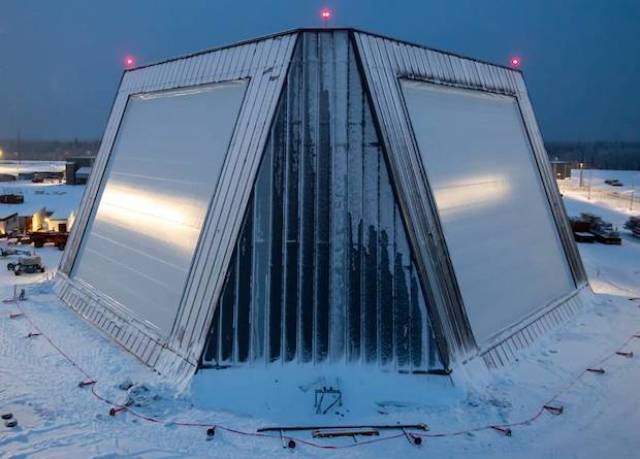The US Missile Defense Agency has completed the construction of the LRDR (Long Range Discrimination Radar) ballistic target selection radar and has begun testing it. According to Defense News, next year the military will integrate LRDR into the GMD missile defense system and the C2BMC combat information and control system.
Today, the U.S. missile defense system includes three PAVE PAWS long-range detection and early warning radars. The US military also has a mobile SBX sea-based radar station operating in the X-band.
The Pentagon announced in 2015 that it was going to deploy a new LRDR ballistic target selection radar in Alaska. Lockheed Martin took over its development. A few years later, she defended the radar project and tested it.
The LRDR radar station was created on the basis of gallium nitride. This material makes it possible to improve signal-to-noise performance compared to modern gallium arsenide-based radars. Therefore, the radar should detect aerial targets at long range and altitude, while consuming less energy.
On December 6, the US Missile Defense Agency announced the completion of the construction of the LRDR and its initial commissioning. Next year, the radar will be integrated into the GMD missile defense system and the C2BMC combat information and control system, and in 2023 the US Air Force should officially take it into operation.
The LRDR will operate in wide-angle visibility modes for target detection and narrow angle modes for accurate recognition and tracking. The radar will be able to distinguish real threats from traps, and in future configurations it will be able to detect hypersonic missiles.
Now ground tests of the radar are continuing. After them, LRDR is waiting for design and operational tests. During the latter, the military will test it with a simulated air threat.
Russia also has a missile attack warning system, and its ground echelon is regularly updated with new over-the-horizon and over-the-horizon radar stations. You can read more about it in our material "From Dniester to Voronezh" .
Vasilisa Chernyavtseva

